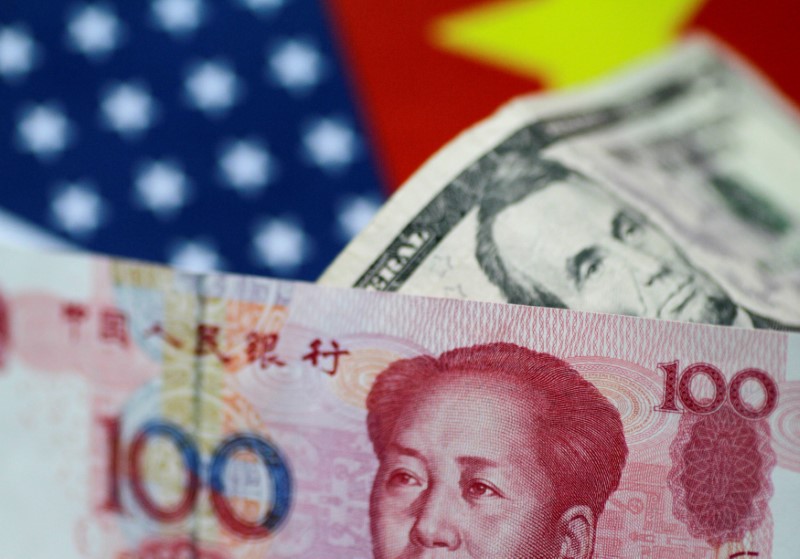Investing.com — Most Asian currencies weakened on Wednesday, with China’s yuan hitting its weakest level in six months, as persistent fears about high U.S. interest rates left traders biased toward the dollar.
Sentiment toward risk-driven regional markets remained weak, especially as aggressive comments from the Federal Reserve continued to filter in. Concerns about slow regional economic growth also weighed heavily.
The and both rose 0.1% in Asian trading, extending overnight gains after Minneapolis Fed President Neel Kashkari said policymakers had not ruled out further rate hikes to combat inflation.
His comments come just days ahead of closely watched data, which is the Fed’s favorite inflation gauge.
Chinese Yuan Weakens, USDCNY At Six-Month High
The Chinese yuan weakened after a soft midpoint fix from the People’s Bank of China pushed the pair to its highest since mid-November.
The PBOC has so far maintained a tight grip on the yuan to stem the currency’s weakness, but now appears to be loosening that grip somewhat amid continued selling pressure on the yuan and weakness in the Chinese economy.
Beijing continued to roll out supportive measures for the real estate market, creating some optimism for the country. But traders remained dubious about how Beijing planned to finance and implement its real estate sector stimulus, as the real estate sector had been in a slump for more than three years.
The Japanese Yen Weakens, BOJ Comments Offer Mediocre Guidance
The Japanese yen weakened further on Wednesday, rising past 157 yen against the dollar.
The currency received little support from somewhat mediocre comments from Bank of Japan officials.
BOJ member Adachi Seiji warned that the central bank could hastily tighten policy if yen weakness affects inflation. He also predicted that inflation would increase in the summer-autumn period.
But Seiji also said the BOJ should be cautious in tightening policy and would remain accommodative in the short term to promote the strength of Japan’s economy.
Australian dollar little supported by high CPI
The Australian dollar saw limited strength on Wednesday, with the pair rising marginally even as inflation grew more than expected in April.
These figures fueled expectations that the Reserve Bank of Australia will have to keep interest rates high for longer, or raise them even further this year, to reduce inflation.
Such a scenario bodes well for Australians, although this optimism has been offset by the strength of the dollar and concerns about slowing economic growth in Australia.
The broader Asian currencies have weakened. The South Korean won pair rose 0.2%, while the Singapore dollar pair added 0.1%.
The Indian rupee pair rose 0.1%, moving back to May’s record high above 83 rupees per dollar.


